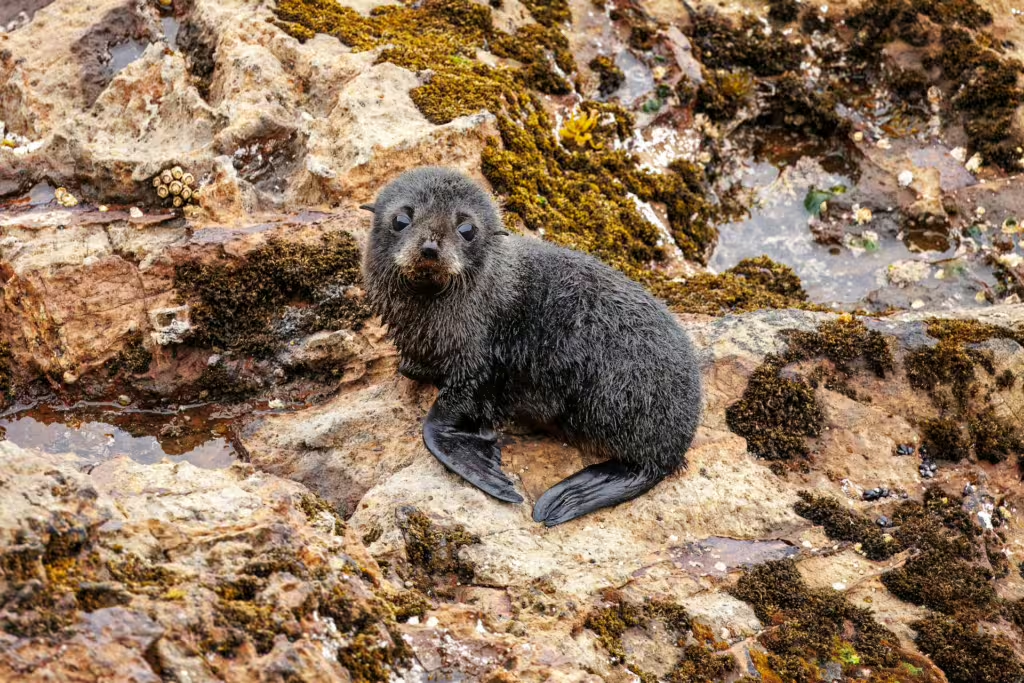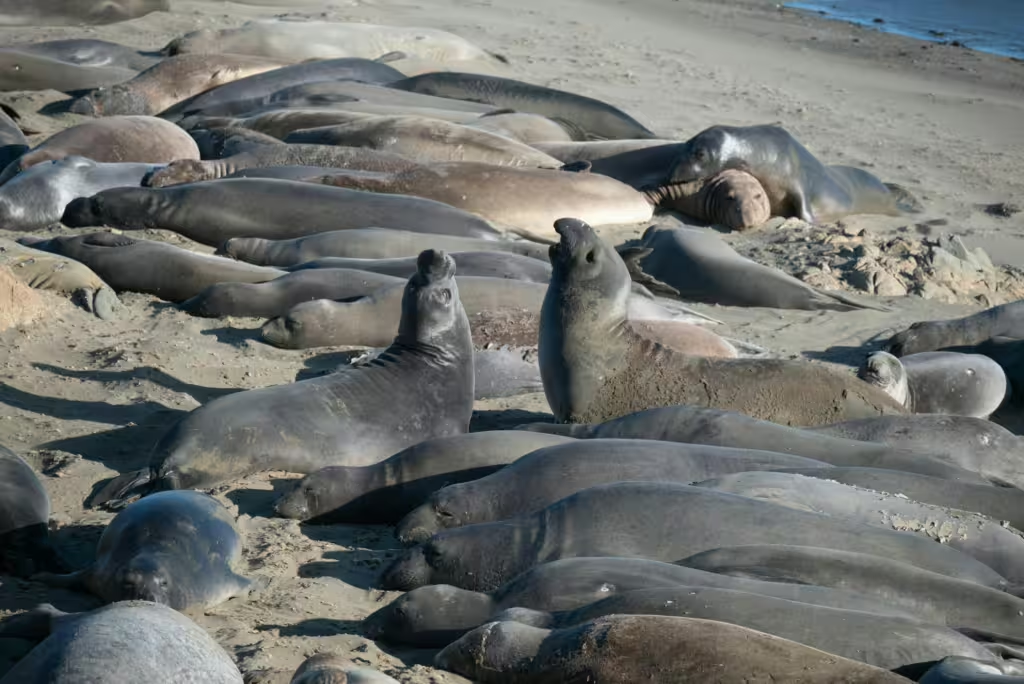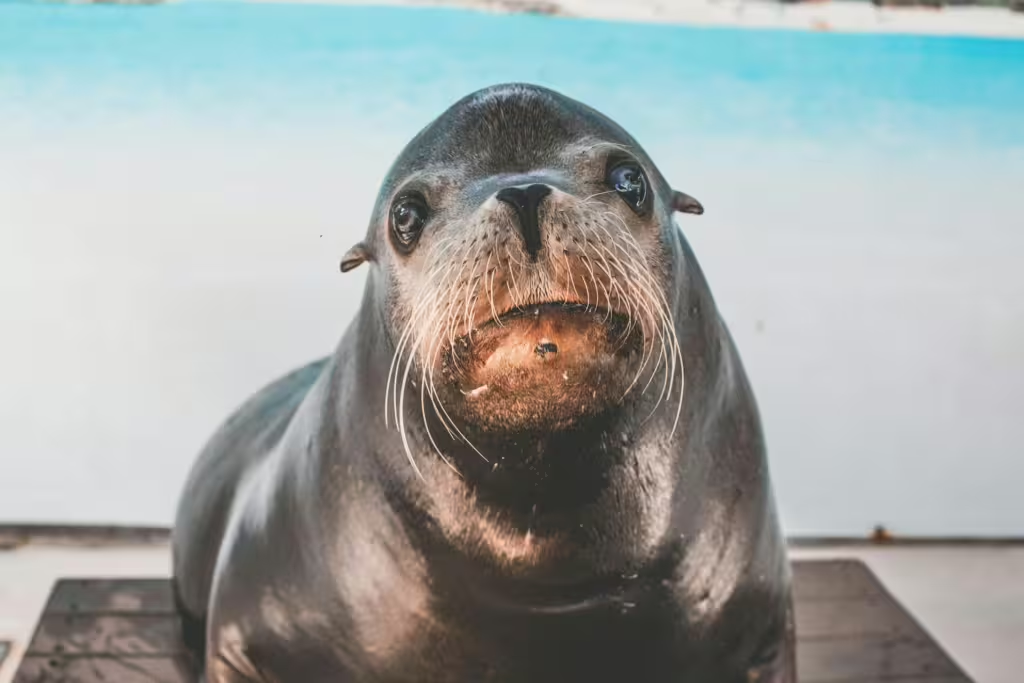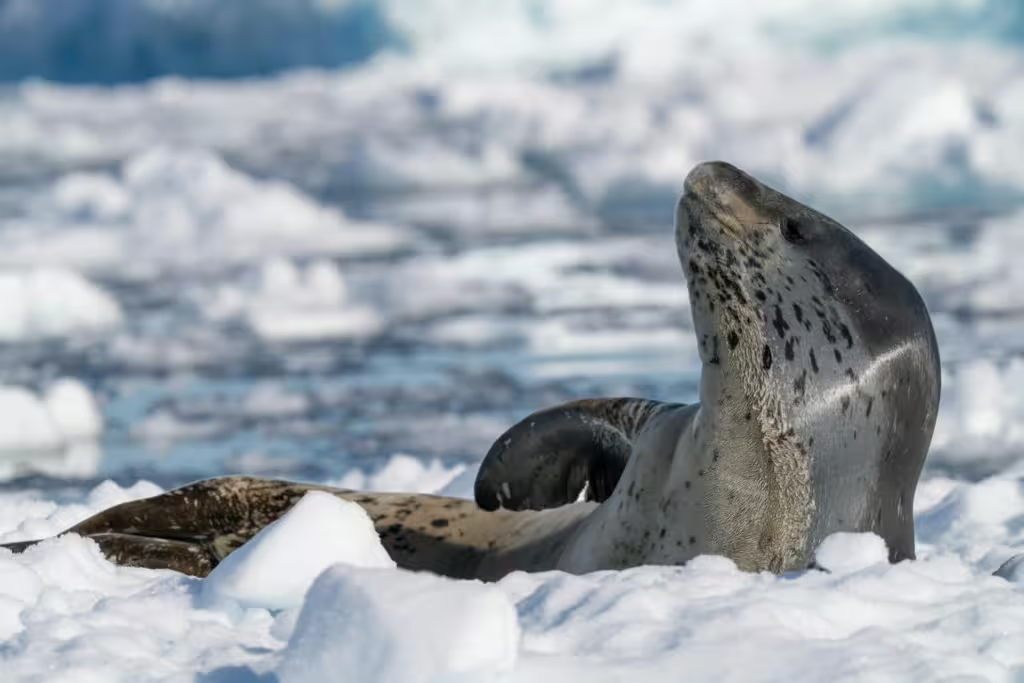Many readers might be unfamiliar with the word pinniped. That’s understandable, as like pachyderm, the word is not part of the common parlance in any way. The term pinniped refers specifically to a group of aquatic mammals that includes seals, sea lions, and walruses, the so-called “dogs of the sea” according to some. This assemblage of fascinating marine mammals have evolved in such a way that it has made them quite unique in the animal kingdom.
Over the course of many hundreds of thousands of years, pinnipeds have adapted in incredible ways to life in the water. They evolved more streamlined bodies, expert swimming abilities, and the remarkable ability to thrive in harsh, often frigid environments, both above water and below the surface. Incidentally, pinnipeds also happen to be integral pieces of the marine ecosystems they inhabit, from the North and South poles, to along the jagged coastlines of every continent except Antarctica itself.
Among the pinnipeds we will discuss in today’s article, there are several species that stand out due to their unique behaviors, singular physical features, and vital roles in their respective ecosystem. In this article, we will dive deep into the mysterious undersea realm of the pinnipeds. We will discuss the amazing lives of seals, walruses, sea lions, and more, exploring everything about them. Finally, we will speak on the subject of conservation and how it relates to pinnipeds the world over.
Understanding Pinnipeds: An Overview
The term “pinniped” comes from the Latin words “pinna,” meaning fin, and “ped,” meaning foot, which,refers, of course, to the flipper-like appendages all of these animals possess. Pinnipeds are divided into three families:
- Phocidae: Otherwise known as true seals or earless seals, these critters are characterized by their lack of external ear flaps and a more streamlined body shape. These animals can move on land but do so by wriggling on their bellies.
- Otariidae: This group includes sea lions and fur seals, which are distinguished by their external ear flaps. Otariidae pinnipeds tend to have more muscular forelimbs along with the ability to “walk” on land using their large flippers.
- Odobenidae: This group contains only walruses, which are large pinnipeds with prominent tusks and huge bodies. These real life sea beasts are most well known for their social behavior, their lives on floating sea ice, and their love of oysters. (That last part is a literary joke, so please bear with me)

As one might expect from their morphology alone, pinnipeds are highly specialized for life in the water. Most of them have streamlined bodies, blubber for insulation, and specialized flippers for swimming. And while they all share certain common traits, each individual species has developed its own unique adaptations to survive in their specific habitats. Some are suited to life in icy Antarctic waters, while others are better suited to living along the warm, sunny shores of the Mediterranean.
Elephant Seals: Giants of the Ocean
Among the most impressive and indeed, the largest of the pinniped species, are the elephant seals. These mighty seals, found primarily on the coasts of the Pacific Ocean, are bigger than any other living pinniped. Males can weigh upwards of to 5,000 pounds, an astonishing weight for something that spends at least some of its time lout of the water. Elephant seals are known for a number of unique adaptations beyond their remarkable size, including their namesake, the prominent, trunk-like noses of the males. These proboscis-like appendages are used for both vocalization and during displays of dominance.
The Two Species of Elephant Seals
There are two species of elephant seals, the Northern elephant seal (Mirounga angustirostris) and the Southern elephant seal (Mirounga leonina). Each of these species have their own behaviors and stomping grounds with Northern elephant seals being found on the western coast of North America, particularly in California and Baja California; and Southern elephant seals inhabiting the southern coasts of South America, including Argentina and the Falkland Islands. The southern variety has also been known to dwell on some sub-Antarctic islands.
- Northern Elephant Seals:Back in the 20th century, the Northern elephant seal was actually on the brink of extinction. It’s population dropped down to fewer than 100 individuals at that time. Fortunately, early conservation efforts brought these animals back from the brink. The establishment of protected rookeries helped their population has recover significantly, with estimates suggesting over 200,000 individuals living today. This species spends much of its life in the open ocean, only returning to land for breeding and molting. Males are well known for engaging in dramatic battles during the breeding season, fighting for dominance over harems of fertile female seals.
- Southern Elephant Seals: The Southern elephant seal is the larger of the two species, with males reaching weights of over 8,000 pounds. These seals also spend much of their time out at sea, as they engage in long migrations in search of food every year. Southern elephant seals will travel vast distances across the Southern Ocean to find a meal. They only haul out on remote, often icy, beaches for breeding and molting when the biological need arises.
Adaptations and Behaviors
Elephant seals are capable of diving to depths of over 5,000 feet in search of some of their favorite prey, like squid, fish, and deep-sea invertebrates. Air breathers like all marine mammals, elephant seals are able to hold their breath for up to two hours at a clip. This is actually due to the high levels of myoglobin in the seals’ muscles, which allows them to store oxygen for longer durations. Their thick layer of blubber insulates them from the cold waters of the deep ocean, while their prodigious bulk helps them conserve heat while searching through the depths.
Agile and efficient swimmers, these seals are able to propel themselves quickly through the water using their powerful fore flippers. Conversely, elephant seals are relatively slow-moving and awkward on land. Males are particularly so, as their large size makes it harder to maneuver.
Conservation of Elephant Seals
The recovery of the northern elephant seal population is a true testament to the power of conservation. Of all the many success stories we have seen in terms of animal protections, this is one of the great ones. Still, challenges exist thanks to human beings. Elephant seals are disrupted by habitat loss, climate change, overfishing, not to mention pollution and discarded fishing gear. If their haul out sites become fewer in number and their breeding grounds begin to run out of fish, elephant seal populations may yet begin to dwindle away once more.
Sea Lions: Playful, Intelligent, and Social
The playful, intelligent sea lion is perhaps the most recognizable pinniped on the planet. These highly-social marine mammals are easily identified by their external ear flaps, which distinguish them from true seals, but they are also easily distinguished by their effective means of “walking” on land using their large front flippers.
Species of Sea Lions
There are several species of sea lions, though the California sea lion (Zalophus californianus) is the most well-known. Found along the coasts of North America, from Canada to Mexico, California sea lions are a common sight among mariners, beachgoers, and fishermen that live along the coast. They are often spotted hauling out on piers and docks, particularly in places like San Francisco Bay. Sea lions also happen to be highly social, forming large colonies during the breeding season. Like elephant seals, male sea lions often compete for females and territories during this time.
Meanwhile, another notable species of Otariidae is the Steller sea lion (Eumetopias jubatus), which can be found along the coasts of Alaska and Russia. These are the larger of the two species of sea lion, and the largest males can grow up to over 2,500 pounds in adulthood. Unlike California sea lions, Steller sea lions are far less social, though they still live in colonies. Nevertheless, these colonies tend to be much smaller and the sea lions evince more solitary behavior.

Behavior and Adaptations
Sea lions are incredibly intelligent creatures, known for their ability to learn new tasks, navigate complex environments, and even perform somewhat complicated tricks in captivity. In the wild, sea lions are just as skilled. They are excellent hunters, often working in groups to catch schools of fish, such as anchovies or herring. This, coupled with their uncanny ability to dive to depths of over 600 feet in search of food, makes them quite resourceful when it comes to getting something to eat. Still, just because they can dive that far doesn’t mean they do it often. They prefer to forage at shallower depths.
On land, sea lions are highly mobile as compared to other pinnipeds. They are able to use their strong foreflippers to “walk” in a sense, which allows them to move quite quickly between the water and their resting places. ea lions are also excellent communicators and are recognizable by their distinctive vocalizations, which can range from barks to growls. They use these doglike sounds to communicate with each other, especially during the breeding season.
Conservation of Sea Lions
While sea lions are not generally considered endangered by the current definition of the word, certain populations, such as the Steller sea lion, have experienced significant declines in recent decades thanks to human beings. These declines have been attributed to the usual suspects, factors such as overfishing, entanglement in fishing nets, habitat loss, and even disease. Still, conservation efforts are ongoing and many regions have already established marine protected areas where sea lions can haul out and breed without being disturbed by humankind.
Leopard Seals: Apex Predators of the Antarctic
The apex predator known as the leopard seal (Hydrurga leptonyx) is feared by many animals that live near it in the frigid waters of the Southern Ocean. Found primarily around the coastlines of Antarctica, leopard seals are huge, highly aggressive carnivores that primarily feed on penguins, fish, and when they need to, even smaller seals.
Physical Characteristics
Leopard seals are named for the distinctive spots on their coats as well as their feline-like ferocity. These long, slender, streamlined seals can move quickly through the water; quicker than you might guess for an animals that can grow up to 12 feet long and weigh as much as 1,300 pounds. The seals have sharp teeth and powerful jaws, which aid them in capturing and crushing their Antarctic prey.
Diet and Hunting Behavior
Leopard seals are opportunistic hunters, capable of adapting their diet based on whatever prey happens to be available at the time. They preferred meal is probably penguin, but they have been known to feed on fish, krill, and other marine mammals, including young seals at times. Though they have been known to hunt in open waters, these solitary hunters prefer to hunt beneath ice floes, where they grab hold of unsuspecting prey or else haul up onto the ice to devour them.
Conservation of Leopard Seals
Leopard seals are not currently considered endangered, but their populations are still vulnerable to climate change. Like so many Arctic predators, the melting sea ice greatly affects their food sources and breeding grounds.
Walruses: The Social Giants of the Arctic
Walruses (Odobenus rosmarus) are large, tusked pinnipeds that inhabit the icy waters of the Arctic Ocean and the coasts of Alaska, Canada, Russia, and Greenland. Their role in their Arctic and sub-Arctic habitat is significant as they help to regulate prey populations that other marine animals don’t readily take advantage of. These animals are massive and adult males can weigh up to 3,700 pounds, but they are perhaps most well-known for their distinctive tusks, which they use for hauling themselves out of the water onto ice floes, social interaction, fighting, and hunting on the ocean floor.

Diet and Social Behavior
Walruses are primarily benthic feeders, which means they use their sensitive whiskers to locate clams, snails, and other invertebrates on the seafloor. These surprisingly agile animals dive to depths of 300 feet to find food, using their tusks to stir up the sediment and their prey all at once. Walruses are highly social creatures and are often found in large herds that can number in the thousands.
Conservation of Walruses
Climate change is affecting walrus populations in a big way. These gentle giants are facing increasing challenges due to a rapid loss of sea ice, their preferred location to haul out during long swims. As sea ice melts, more and more walruses are forced to haul out on land, where they are more vulnerable. Additionally, the melting of ice has greatly affected the availability of prey and the animals’ ability to travel the long distance between their feeding and breeding areas.
Conclusion: The Need for Pinniped Conservation
As you can see, our planet’s pinnipeds are some of the most incredible creatures the world has ever seen. Many of these seals are apex predators within their ecosystems and are vital to their continued health and success. This is why it is so important that we protect them, despite the threats they face coming almost primarily from our very existence. Climate change, habitat destruction, pollution, starvation, hunting; all of these things are caused by human beings and every single one of them affects pinniped populations. If we don’t continue doing what we can to sort out the issues we have caused for our marine neighbors, then these amazing mammals will disappear from this Earth for good.
Discover more from TrueInvestigator
Subscribe to get the latest posts sent to your email.


